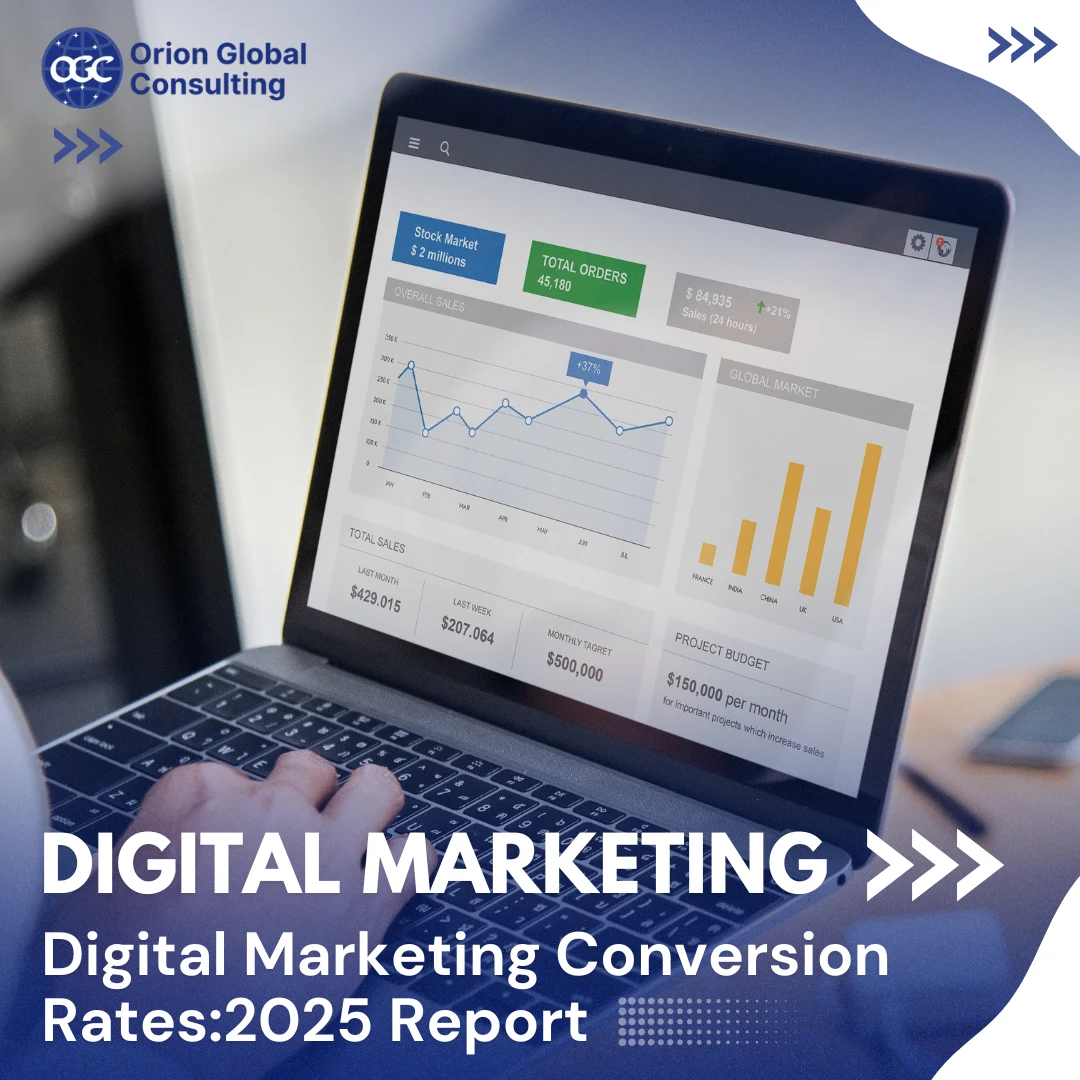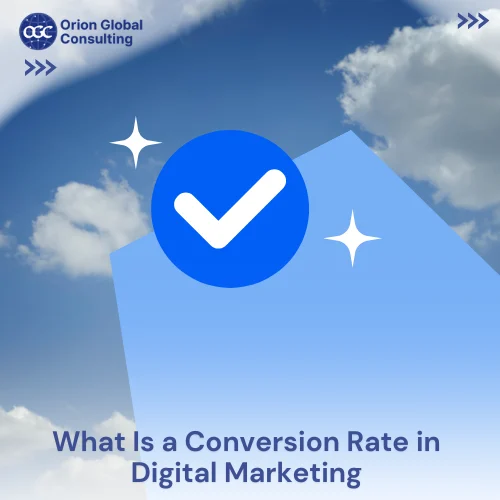
Understanding the performance of digital marketing channels is key to running a successful campaign. Every business wants to turn website visitors into real customers. It has also become a necessity for a business to survive in this competitive era. To do this, you must track what works and what doesn’t. That means checking which channels bring the most results. You also need to check which ones give the best return on money spent. In addition, you have to analyse which ones need improvement. This is a tough task, and it is better to hire digital marketing services for the same. Over time, this helps you focus on the most effective platforms for your industry.
In this blog post, we will explain digital marketing conversion rates in easy terms. It will help you understand where to spend your time and budget.
What Is a Conversion Rate in Digital Marketing?

Conversion rate shows the number of people who visit your website and take action, such as filling out a form. It can be signing up for a free trial. Moreover, it can also be calling your company’s support. These are called “hard” conversions. They do not include smaller actions like downloading a free guide and subscribing to a blog. You can see if your marketing efforts are good enough by measuring conversion rates. A higher conversion rate means more people are doing what you want them to do. Different marketing channels have different results. This also depends on your industry.
Way Digital Marketing Channels Perform
Digital marketing services make use of different digital marketing methods. These include
- Search Engine Optimisation (SEO)
- Email Marketing
- Pay-Per-Click Advertising (PPC)
- Social Media Ads
- Influencer Marketing
Each method gives different results for business-to-consumer (B2C) and business-to-business (B2B) companies. For example, email marketing shows good results in both B2C and B2B. On the other hand, display ads and influencer marketing have lower results on average.
Here is a table to help you compare the conversion rates of different channels in B2C and B2B marketing:
| Channel | B2C Conversion Rate in % | B2B Conversion Rate in % |
| SEO | 2.1 | 2.6 |
| SEM/PPC | 1.2 | 1.5 |
| Email Marketing | 2.8 | 2.4 |
| Organic Social | 2.4 | 1.7 |
| Paid Social | 2.1 | 0.9 |
| Display Ads | 0.7 | 0.3 |
| Influencer Marketing | 1.1 | 0.8 |
| Affiliate Marketing | 2.0 | 1.2 |
| Online PR | 1.4 | 1.1 |
| Webinars | 1.3 | 2.3 |
Best Channels by Industry

Not every channel works the same for every industry. For example, SEO works very well for the addiction treatment sector and also for financial services. On the other hand, webinars bring the best results for industries like biotech, oil and gas, and construction. Email marketing performs strongly in areas like healthcare. It also works for IT services and manufacturing.
If you know which channels work best for your industry, you can focus your marketing efforts there. You can’t believe but it saves a lot of time and money. The right digital marketing services company can provide assistance in this.
Planning a High-Converting Campaign
If you want better conversion rates, you must choose the right channels. You have to set up proper tracking. Also, you need to improve your campaigns regularly. First, decide which channels suit your business goals. Then, create strong landing pages and simple forms. You have to give clear messages to attract the right people. You can use tools to track the way your visitors behave on your site. After this, look at the results and improve anything that is not working. Finally, test new ideas and repeat the process to keep growing.
The Role of Lead Nurturing
Most visitors will not convert the first time they see your ad or visit your website. That is why lead nurturing is so important. It means staying in touch with your audience through emails and social media. This keeps your brand in their mind. Over time, they become more familiar with your business. Hence, they are more likely to take action. You can send helpful information, updates, and personalised content to help them make a decision.
Making Smart Use of Data
Numbers and data help you make better decisions. When you run a digital campaign, it is not just about spending money. It is about knowing what’s working. By checking your conversion rates often, you can stop spending on poor-performing ads. You can increase the budget on those that bring results. This helps you get more customers for less money. You should also check the way people behave on your website. If many people leave without taking action, you might need to change your content or design.
Growth Opportunities in Every Industry
From small local services to large industrial businesses, every type of company can benefit from tracking conversion rates. Some industries get better results from social media. Others do well through email and webinars. It depends on your audience.
For example, business clients respond well to online seminars and emails. Meanwhile, regular consumers may prefer social media posts and influencer reviews. That means you need to find what works for your audience. Afterward, you have to give it your best effort. This is one of the best ways to increase your customer base.
Conclusion
Digital marketing is full of opportunities. But not all strategies will suit your business. To grow your brand, you need to understand which marketing channels work best for your industry. It also helps in attracting more customers to your site.
Start by checking your current conversion rates. Then, plan smart campaigns using the top channels. Track results and adjust your strategy based on the data. With time and the right tools, you can build a marketing plan that brings steady leads and strong returns. Digital success comes from testing, learning, and improving. Keep it simple and stay focused.
For the best digital marketing services London, contact Orion Global Consulting. You can also connect with us for any assistance related to our services.


